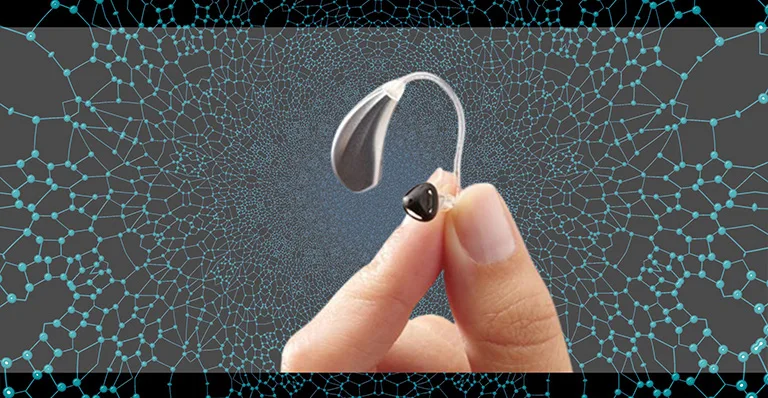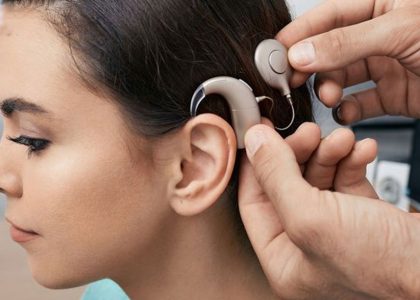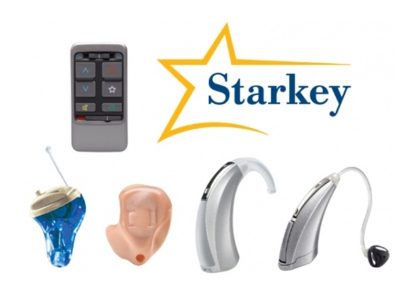Hearing Aids
Hearing aids are small electronic devices designed to improve the hearing capabilities of individuals with hearing impairments. By amplifying sound, these devices play a crucial role in enhancing the quality of life for millions of people worldwide. Hearing loss can significantly impact communication, social interactions, and overall well-being, making the availability and effectiveness of hearing aids essential. This article delves into the various types of hearing aids, their working mechanisms, prices, technological advancements, and the process of selecting the right device. Additionally, it explores the benefits, challenges, and future trends in the hearing aid industry, providing a comprehensive overview for anyone looking to understand or invest in these vital tools.
Category-Wise Hearing Aid Devices
|
Invisible In Canal (IIC) |
||
|
Picture |
Model |
Price |
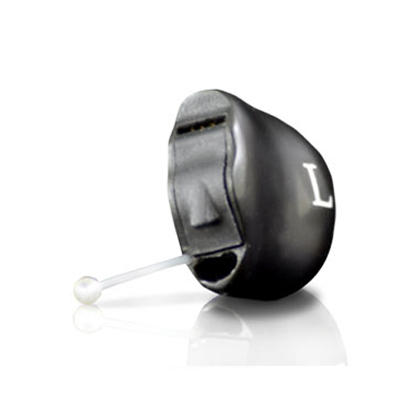 |
420000 |
|
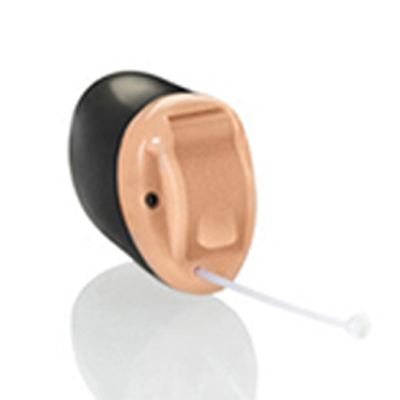 |
180000 |
|
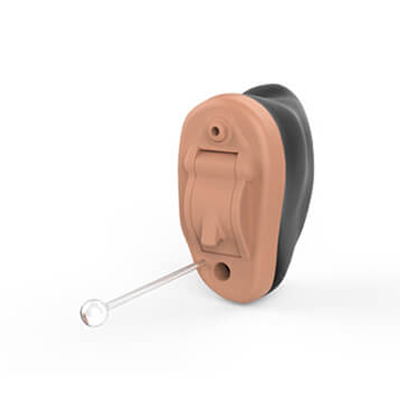 |
400000 |
|
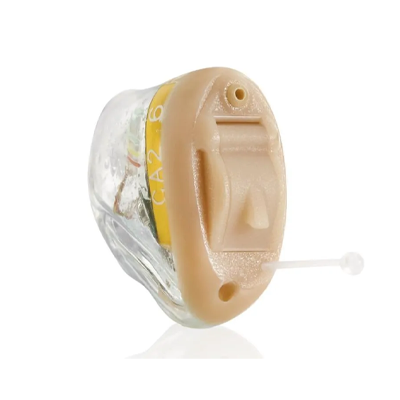 |
45000 |
|
 |
400000 |
|
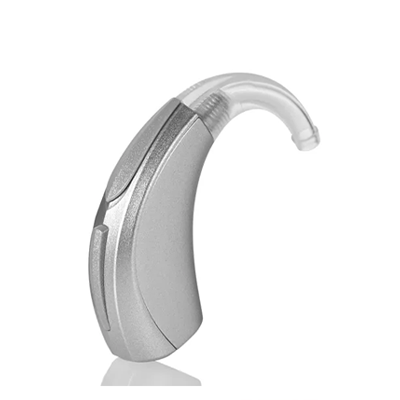 |
22500 |
|
——————-–
——————————————-
—————————————————–
|
Completely In Canal (CIC) |
||
|
Picture |
Model |
Price |
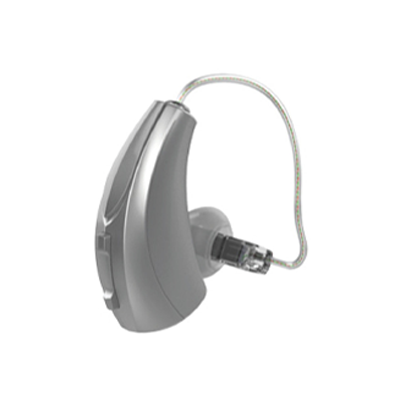 |
330000 | |
 |
420000 | |
 |
30000 | |
——————-–
——————————————-
—————————————————–
|
In The Canal (ITC) |
||
|
Picture |
Model |
Price |
 |
330000 |
|
 |
420000 |
|
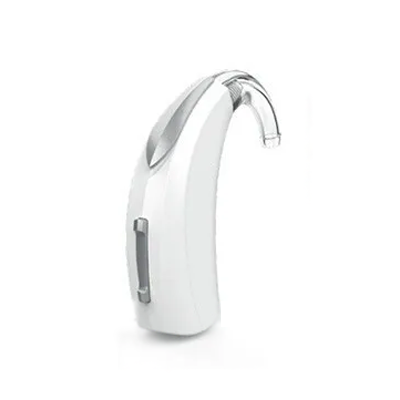 |
70000 |
|
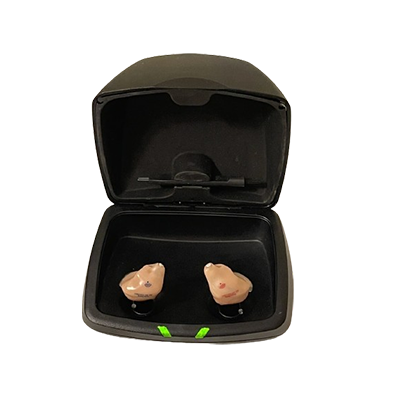 |
100000 |
|
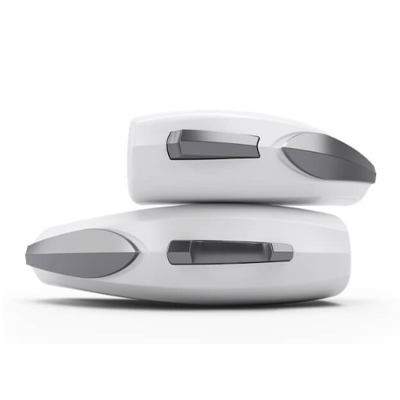 |
190000 |
|
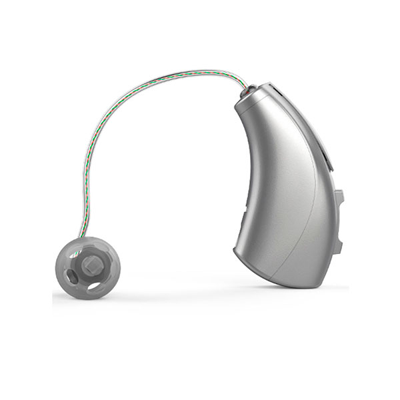 |
300000 |
|
 |
400000 |
|
 |
30000 |
|
——————-–
——————————————-
—————————————————–
|
In The Ear (ITE) |
||
|
Picture |
Model |
Price |
 |
330000 |
|
 |
420000 |
|
 |
70000 |
|
 |
100000 |
|
 |
190000 |
|
 |
300000 |
|
 |
400000 |
|
 |
30000 |
|
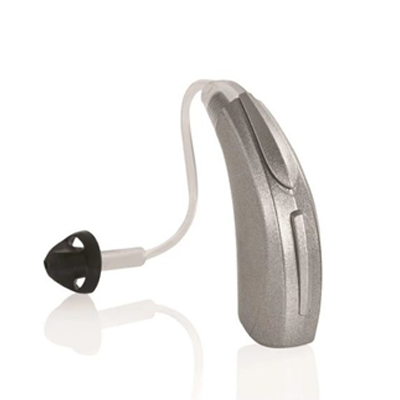 |
45000 |
|
——————-–
——————————————-
—————————————————–
|
Receiver In Canal (RIC) |
||
|
Picture |
Model |
Price |
 |
330000 |
|
 |
70000 |
|
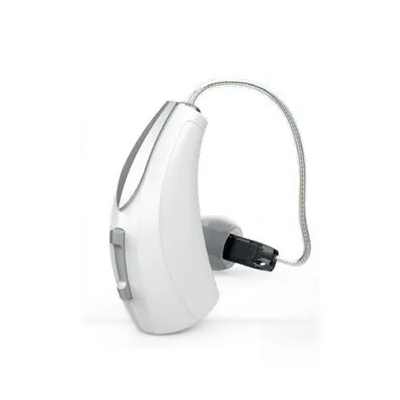 |
50000 |
|
 |
100000 |
|
 |
190000 |
|
 |
300000 |
|
 |
400000 |
|
 |
30000 |
|
 |
45000 |
|
——————-–
——————————————-
—————————————————–
|
Behind The Ear (BTE) |
||
|
Picture |
Model |
Price |
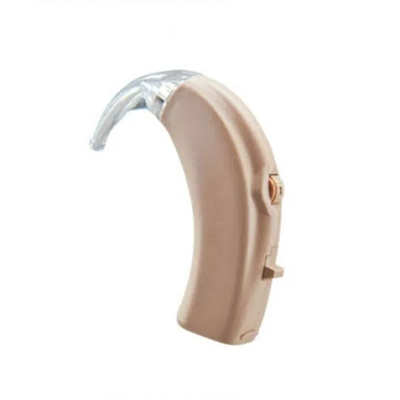 |
24000 |
|
 |
330000 |
|
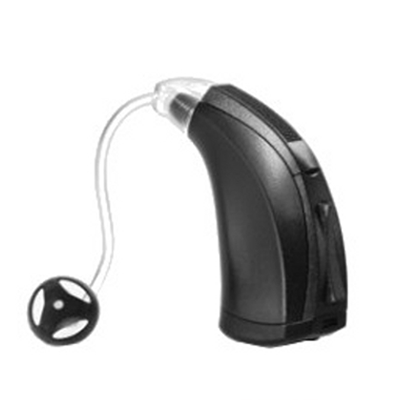 |
21500 |
|
 |
70000 |
|
 |
50000 |
|
 |
100000 |
|
 |
190000 |
|
 |
300000 |
|
 |
400000 |
|
 |
30000 |
|
 |
45000 |
|
 |
22500 |
|
——————-–
——————————————-
—————————————————–
|
Custom |
||
|
Picture |
Model |
Price |
 |
70000 |
|
 |
100000 |
|


–
Categories
Invisible-in-the-Canal (IIC) Hearing Aids
Definition: Invisible-in-the-Canal (IIC) hearing aids are the smallest hearing aids available, designed to fit deep inside the ear canal, making them virtually invisible when worn.
Features:
– Custom-made to fit deeply within the ear canal.
– Designed for maximum discretion and minimal visibility.
– Typically used for mild to moderate hearing loss.
– Often includes basic features like automatic sound adjustment.
Advantages:
– Discreetness: IIC hearing aids are nearly invisible, providing a cosmetically appealing option for those concerned about appearance.
– Natural Sound Quality: Deep placement in the ear canal helps to provide more natural sound localization and reduces wind noise.
– Comfort: Custom-fitted to the unique shape of the wearer’s ear, offering a snug and comfortable fit.
Disadvantages:
– Handling: Due to their small size, IIC hearing aids can be difficult to insert, remove, and adjust, especially for individuals with dexterity issues.
– Battery Life: Smaller size means smaller batteries, which need to be replaced more frequently.
– Limited Features: The compact design limits the inclusion of advanced features like wireless connectivity and directional microphones.
– Maintenance: Prone to earwax and moisture buildup, requiring regular cleaning and maintenance.
Completely-in-the-Canal (CIC) Hearing Aids
Definition: Completely-in-the-Canal (CIC) hearing aids are small, custom-made devices that fit entirely within the ear canal, making them less visible than larger hearing aids.
Features:
– Custom-molded to fit completely inside the ear canal.
– Suitable for mild to moderately severe hearing loss.
– Limited room for controls or additional features due to their small size.
Advantages:
– Discreet Appearance: CIC hearing aids are less visible than larger models, offering a cosmetically appealing solution.
– Sound Quality: Placement in the ear canal allows for natural sound collection and reduced wind noise.
– Comfort: Custom-fit to the wearer’s ear canal for a secure and comfortable fit.
Disadvantages:
– Handling: Small size can make them difficult to handle, insert, and remove.
– Battery Life: Smaller batteries require more frequent replacement.
– Limited Features: Limited space for advanced features like directional microphones and wireless connectivity.
– Maintenance: Prone to earwax and moisture buildup, necessitating regular cleaning and maintenance.
Behind-the-Ear (BTE) Hearing Aids
Definition: Behind-the-Ear (BTE) hearing aids are devices worn behind the outer ear. They are connected to an earmold or a thin tube that fits inside the ear canal, directing sound into the ear.
Features:
– Positioned behind the outer ear.
– Connected to an earmold inside the ear canal by a thin tube.
– Larger size, allowing for powerful amplification and longer battery life.
– Typically includes features such as directional microphones, telecoil, and wireless connectivity.
Advantages:
– Suitable for all types of hearing loss, from mild to profound.
– Longer battery life and more powerful amplification.
– Accommodates advanced features.
– Easier to handle for people with dexterity issues.
Disadvantages:
– More visible than smaller hearing aids.
– Can be uncomfortable for users with glasses or smaller ears.
– Requires more frequent cleaning and maintenance.
In-the-Ear (ITE) Hearing Aids
Definition: In-the-Ear (ITE) hearing aids fit completely inside the outer ear (the concha). They are custom-molded to fit the unique shape of the wearer’s ear.
Features:
– Available in full-shell (filling most of the outer ear) and half-shell (filling only the lower part).
– Can include features like volume control, program buttons, and directional microphones.
Advantages:
– Custom-molded for a secure and comfortable fit.
– Less visible than BTE hearing aids.
– Larger size compared to ITC and CIC aids, making them easier to handle.
– Can accommodate many advanced features.
Disadvantages:
– More visible than completely-in-canal models.
– Prone to being clogged by earwax and moisture.
– Larger than ITC and CIC, which may not be ideal for those seeking a more discreet option.
In-the-Canal (ITC) Hearing Aids
Definition: In-the-Canal (ITC) hearing aids are custom-made to fit partially or completely in the ear canal. ITC hearing aids sit in the lower portion of the outer ear.
Features:
– ITC aids are slightly larger than CIC aids.
– Typically include limited features like volume control.
– Among the smallest hearing aids available, offering a discreet appearance.
Advantages:
– Less visible than larger hearing aids.
– Custom-molded to fit the ear canal, providing a snug fit.
– Placement in the ear canal allows for more natural sound collection.
Disadvantages:
– Smaller size limits the number of features.
– Difficult to handle and adjust, especially for those with dexterity issues.
– Shorter battery life due to smaller batteries.
– Susceptible to earwax and moisture clogging.
Receiver-in-Canal (RIC) and Receiver-in-the-Ear (RITE) Hearing Aids
Definition: Receiver-in-Canal (RIC) and Receiver-in-the-Ear (RITE) hearing aids have the receiver (speaker) placed inside the ear canal, connected to the main body of the hearing aid by a thin wire. The main body sits behind the ear.
Features:
– Combines elements of BTE and ITC designs.
– Offers a discreet appearance with advanced features of BTE models.
– Often includes wireless connectivity, directional microphones, and noise reduction.
Advantages:
– Smaller behind-the-ear portion makes them less visible.
– Placement of the receiver in the ear canal offers better sound quality and less feedback.
– Lightweight and comfortable to wear.
– Suitable for a wide range of hearing losses.
Disadvantages:
– Receiver in the ear canal can be prone to wax and moisture buildup.
– More delicate components require careful handling.
– Smaller batteries may require more frequent changes.
Bone-Anchored Hearing Aids (BAHA)
Definition: Bone-Anchored Hearing Aids (BAHA) are surgically implanted devices that transmit sound through the bones of the skull directly to the inner ear, bypassing the outer and middle ear.
Features:
– Suitable for individuals with conductive hearing loss, single-sided deafness, or those who cannot use traditional hearing aids.
– Consists of an external processor and an implant.
Advantages:
– Effective for specific types of hearing loss that traditional hearing aids cannot address.
– Provides clear sound transmission via bone conduction.
Disadvantages:
– Requires surgical implantation, involving potential risks and recovery time.
– Maintenance and follow-up care are needed.
Custom Hearing Aids
Definition: Custom hearing aids are personalized devices made to fit the unique shape of the wearer’s ear. They can range in size and visibility, from larger In-the-Ear (ITE) models to smaller In-the-Canal (ITC) and Completely-in-the-Canal (CIC) models.
Features:
– Custom-molded to fit the ear’s unique contours.
– Available in various styles, including ITE, ITC, CIC, and IIC.
– Can include features such as volume control, directional microphones, and wireless connectivity, depending on the size.
Advantages:
– Personalized Fit: Custom-molded for a secure and comfortable fit, tailored to the individual’s ear anatomy.
– Range of Options: Various styles and sizes to meet different hearing needs and cosmetic preferences.
– Comfort: Customization ensures that the hearing aid fits well and stays in place.
Disadvantages:
– Cost: Custom hearing aids can be more expensive due to the personalized fitting process.
– Production Time: Custom molding and manufacturing can take longer compared to standard hearing aids.
– Maintenance: Custom-fit devices, especially smaller ones, may require more frequent cleaning and maintenance due to their positioning in the ear.
By understanding the distinct categories of hearing aids, individuals can make informed decisions about which type best suits their hearing needs, lifestyle, and preferences. Consulting with an audiologist is essential to ensure the selected hearing aid provides the optimal benefit.
Locations For Purchase
| Dhanmondi Branch | Jattrabari Branch | Jessore Branch |
| Phone: +8801712522784, 01858182905 Address: 1st Floor, Room 247, Concord Arcadia, House 1 & 2, Dhaka 1205. |
Phone: 01756-797485, 01956-851240 Address: 29/2. West Jattrabari (1st Floor), Doyagonj, Notun Rasta Moor, Dhaka-1204. |
Phone: 01756-797484, 01955-265855 Address: R.S. Bhaban (ground floor), Jail Road, Jessore. |
Factors Influencing Cost
When considering the purchase of hearing aids, understanding the various factors that influence their cost is crucial. Prices can vary significantly, depending on several key elements:
I. Technology Level
A. Basic Technology
– Features: Basic hearing aids provide essential amplification and may include basic noise reduction and feedback cancellation.
– Cost: These are generally the most affordable option, suitable for individuals with simpler hearing needs.
B. Mid-Level Technology
– Features: These devices offer more advanced sound processing, better noise reduction, and more customization options. They may include directional microphones and connectivity to external devices.
– Cost: Mid-range in price, balancing cost and performance for users with moderate hearing needs.
C. Advanced Technology
– Features: High-end hearing aids feature the latest technology, including superior sound processing, advanced noise reduction, multiple listening programs, Bluetooth connectivity, and AI-driven adaptive adjustments.
– Cost: These are the most expensive, designed for users who need or want the best performance and most features.
II. Style and Size
A. Behind-the-Ear (BTE)
– Cost: Generally less expensive than smaller styles due to their larger size, which can accommodate more components without the need for miniaturization.
B. In-the-Ear (ITE)
– Cost: Typically mid-range, as they are custom-molded but larger than completely in-the-canal models.
C. In-the-Canal (ITC) and Completely-in-the-Canal (CIC)
– Cost: Often more expensive due to their small size and the custom fitting process.
D. Invisible-in-the-Canal (IIC)
– Cost: Among the most expensive due to their deep placement, miniaturization, and custom fit.
III. Customization and Fitting
A. Custom-Molded Devices
– Cost: Higher cost due to the personalized fitting process, which ensures the hearing aid fits the unique contours of the user’s ear.
B. Standard Fit Devices
– Cost: Generally less expensive, as they are pre-manufactured and not custom-molded.
IV. Additional Features
A. Connectivity Options
– Bluetooth and Wireless Streaming: Adds to the cost due to the additional technology required for connectivity with smartphones, TVs, and other devices.
B. Rechargeable Batteries
– Cost: Higher initial cost but can save money over time compared to disposable batteries.
C. Telecoil
– Cost: Adds to the cost, especially useful for users who frequently use hearing loop systems.
D. Advanced Noise Reduction and Feedback Cancellation
– Cost: Increases the price due to the sophisticated technology that enhances listening comfort and clarity.
V. Brand and Manufacturer
A. Premium Brands
– Cost: Higher prices due to brand reputation, advanced research and development, and premium customer service and warranties.
B. Lesser-Known Brands
– Cost: Generally more affordable but may offer fewer features and less advanced technology.
VI. Professional Services
A. Audiologist Services
– Cost: Includes the cost of hearing tests, fitting appointments, adjustments, and follow-up care. These services are crucial for optimal hearing aid performance and can add significantly to the overall cost.
B. Warranty and Aftercare
– Cost: Comprehensive warranties and aftercare services, including maintenance and repairs, can increase the initial purchase price but provide value and peace of mind.
VII. Geographic Location
A. Regional Variations
– Cost: Prices can vary based on geographic location due to differences in market demand, cost of living, and availability of services.
VIII. Insurance and Financial Assistance
A. Insurance Coverage
– Cost: Some insurance plans may cover part or all of the cost of hearing aids, affecting the out-of-pocket expense for the user.
B. Financial Assistance Programs
– Cost: Programs and discounts offered by manufacturers, government agencies, or non-profit organizations can reduce the overall cost for eligible individuals.
The cost of hearing aids is influenced by a variety of factors, including technology level, style, customization, additional features, brand, professional services, geographic location, and insurance coverage. Understanding these factors can help individuals make informed decisions and find hearing aids that fit both their needs and budget. Consulting with an audiologist is essential to ensure the selected hearing aid provides the best possible benefit.
Benefits
Hearing aids offer a wide range of benefits that significantly improve the quality of life for individuals with hearing loss. Here are some key advantages:
I. Improved Communication
A. Enhanced Speech Understanding
– Clarity: Hearing aids amplify sounds, making it easier to understand speech, especially in noisy environments.
– Conversations: They enable smoother, more effective communication with family, friends, and colleagues.
B. Social Interaction
– Engagement: Users can participate more actively in social activities and conversations, reducing feelings of isolation.
– Confidence: Improved hearing boosts confidence in social settings, encouraging more interaction and participation.
II. Better Quality of Life
A. Emotional Well-being
– Reduction in Stress: Easier communication reduces the stress and frustration associated with hearing loss.
– Increased Independence: Enhanced hearing allows for greater independence in daily activities.
B. Mental Health
– Cognitive Health: Improved hearing helps maintain cognitive function, reducing the risk of cognitive decline and conditions like dementia.
– Mood Improvement: Users often experience improved mood and reduced feelings of depression and anxiety.
III. Professional and Educational Advantages
A. Workplace Efficiency
– Productivity: Better hearing enhances job performance by improving communication with colleagues and clients.
– Opportunities: Improved hearing can open up new career opportunities and advancement.
B. Learning and Development
– Education: For students, hearing aids can significantly enhance the learning experience by ensuring they can hear instructors and participate in classroom discussions.
IV. Safety and Awareness
A. Environmental Awareness
– Sound Detection: Hearing aids help users detect important environmental sounds, such as alarms, traffic, and warning signals, enhancing personal safety.
B. Situational Awareness
– Spatial Awareness: Advanced hearing aids provide directional microphones and sound localization, helping users understand where sounds are coming from, which is crucial in various situations.
V. Technological Features
A. Connectivity
– Bluetooth: Many modern hearing aids offer Bluetooth connectivity, allowing users to connect to smartphones, TVs, and other devices for direct audio streaming.
– Assistive Listening Devices: Integration with other assistive listening devices enhances overall hearing aid functionality.
B. Customization
– Personalized Settings: Hearing aids can be programmed to match the specific hearing loss profile of the user, providing a tailored listening experience.
– Adaptive Features: Some hearing aids automatically adjust settings based on the listening environment, providing optimal sound quality in different situations.
VI. Health Benefits
A. Tinnitus Management
– Relief: Many hearing aids come with built-in tinnitus masking features that help manage the perception of ringing or buzzing in the ears.
B. Reduced Cognitive Load
– Easier Listening: By amplifying sounds and reducing background noise, hearing aids lessen the cognitive effort required to understand speech, allowing the brain to function more efficiently.
VII. Cognitive and Emotional Benefits
A. Cognitive Enhancement
– Brain Stimulation: Improved auditory input provided by hearing aids can stimulate the brain, maintaining cognitive function and potentially reducing the risk of cognitive decline.
– Memory Retention: Enhanced communication and social engagement facilitated by hearing aids may contribute to better memory retention and overall cognitive health.
B. Emotional Well-being
– Social Connection: By enabling better communication with loved ones, hearing aids foster deeper social connections, leading to increased feelings of happiness and fulfillment.
– Reduced Social Isolation: Improved hearing allows individuals to participate more fully in social activities, reducing feelings of loneliness and isolation.
Hearing aids offer numerous benefits that enhance communication, quality of life, safety, and overall well-being. They provide users with the ability to engage more fully in social, professional, and educational activities, improving emotional and mental health. With advanced technological features and personalized settings, modern hearing aids offer a highly effective solution for managing hearing loss and its associated challenges. For optimal results, consulting with an audiologist is essential to select and customize the hearing aids to meet individual needs.
Proper Selection and Fitting
Selecting and fitting hearing aids requires careful consideration of various factors to ensure optimal performance and user satisfaction. Here are the key steps involved in the process:
I. Hearing Assessment
A. Comprehensive Hearing Evaluation
– Audiological Assessment: Conducted by a licensed audiologist, this assessment evaluates the type and degree of hearing loss, as well as the individual’s hearing needs and preferences.
– Speech Understanding Tests: Assess the ability to understand speech in different listening environments.
II. Consultation and Counseling
A. Discussion of Hearing Needs and Lifestyle
– Lifestyle Assessment: Understanding the user’s daily activities, social interactions, and communication preferences helps guide the selection of appropriate hearing aids.
– Expectations: Managing expectations by discussing the limitations and capabilities of hearing aids is crucial for realistic outcomes.
III. Selection of Hearing Aids
A. Technology Level and Features
– Match to Hearing Loss: Choose hearing aids with appropriate amplification and processing capabilities based on the audiologist’s recommendations and the user’s needs.
– Consider Lifestyle: Select features such as Bluetooth connectivity, rechargeable batteries, and directional microphones based on the user’s lifestyle and preferences.
IV. Customization and Fitting
A. Ear Impressions
– Custom Molded: For in-the-ear and completely-in-the-canal hearing aids, ear impressions are taken to ensure a precise fit.
B. Programming and Adjustment
– Real-Ear Measurement: Using real-ear measurement equipment, the audiologist verifies that the hearing aids are amplifying sounds accurately according to the user’s hearing prescription.
– Fine-Tuning: Adjustments are made to the hearing aid settings based on the user’s feedback and preferences, optimizing comfort and performance.
V. Verification and Validation
A. Verification
– Speech Mapping: Verifies that the hearing aids are providing adequate amplification for speech sounds at different frequencies.
– Functional Testing: Ensures all features and settings are working correctly.
B. Validation
– User Satisfaction Survey: Conducted after a trial period, this survey assesses the user’s satisfaction with the hearing aids’ performance and comfort.
– Follow-Up Appointments: Additional follow-up appointments allow for further adjustments and fine-tuning based on the user’s feedback.
VI. Education and Counseling
A. User Training
– Handling and Maintenance: Instruction on how to insert, remove, clean, and maintain the hearing aids to ensure longevity and optimal performance.
– Understanding Features: Education on how to use and benefit from the various features and settings of the hearing aids.
VII. Follow-Up Care
A. Regular Check-ups
– Monitoring Hearing Changes: Periodic evaluations to monitor changes in hearing and adjust hearing aids accordingly.
– Maintenance: Cleaning, servicing, and battery replacement to keep the hearing aids in optimal condition.
Proper selection and fitting of hearing aids are essential for maximizing their effectiveness and user satisfaction. By following a comprehensive process that includes thorough assessment, customization, verification, and education, audiologists can ensure that individuals receive hearing aids tailored to their specific needs and preferences. Ongoing follow-up care and support are crucial for maintaining optimal hearing aid performance and addressing any changes or concerns that may arise over time.
How Hearing Aids Work
A. Basic components
Hearing aids are complex devices designed to amplify sound and improve hearing ability for individuals with hearing loss. They consist of several fundamental components, each playing a crucial role in the functioning of the device. Here’s an overview of the basic components found in most hearing aids:
1. Microphone
Function:
The microphone is the primary input device of a hearing aid, responsible for capturing sound from the surrounding environment.
Operation:
– Sound Reception:
– The microphone picks up acoustic signals, converting them into electrical signals.
– It collects sounds from the environment, including speech, music, and ambient noise.
Importance:
– The microphone ensures that external sounds are captured and processed by the hearing aid for amplification and transmission to the user’s ear.
2. Amplifier
Function:
The amplifier is responsible for increasing the intensity or volume of the electrical signals received from the microphone.
Operation:
– Signal Amplification:
– The electrical signals, representing the captured sounds, are passed through the amplifier.
– The amplifier boosts the strength of these signals to a level suitable for driving the speaker.
Importance:
– Amplification compensates for the reduced sensitivity to sound experienced by individuals with hearing loss, allowing them to perceive sounds more clearly.
3. Speaker
Function:
The speaker, also known as the receiver, converts the amplified electrical signals back into acoustic sound waves.
Operation:
– Sound Transmission:
– The amplified signals are transmitted to the speaker.
– The speaker converts the electrical signals into audible sound, which is then delivered into the user’s ear canal.
Importance:
– The speaker ensures that the amplified sound is effectively transmitted to the user’s ear, facilitating improved hearing ability.
4. Battery
Function:
The battery serves as the power source for the hearing aid, supplying the necessary electrical energy to operate its components.
Operation:
– Power Supply:
– The battery provides the electrical energy required to power the microphone, amplifier, and speaker.
– It allows the hearing aid to function effectively for extended periods.
Importance:
– The battery ensures that the hearing aid remains operational, enabling individuals to benefit from improved hearing ability throughout their daily activities.
B. Process of sound amplification
Hearing aids are sophisticated devices designed to amplify sound and improve the hearing ability of individuals with hearing loss. Understanding how they work can provide insight into their effectiveness and benefits. Here’s an overview of the basic principles behind how hearing aids function:
I. Sound Reception
A. Microphones
– Hearing aids are equipped with one or more microphones that pick up sound from the surrounding environment.
– The microphones convert sound waves into electrical signals, which are then processed by the hearing aid’s internal circuitry.
II. Signal Processing
A. Amplification
– The electrical signals received from the microphones are amplified to increase their intensity.
– Amplification compensates for the reduced sensitivity to sound experienced by individuals with hearing loss, allowing them to perceive sounds more clearly.
B. Signal Processing Algorithms
– Hearing aids employ sophisticated signal processing algorithms to enhance speech intelligibility and reduce background noise.
– These algorithms analyze incoming sounds and apply specific processing techniques to prioritize speech signals and suppress unwanted noise.
C. Frequency Adjustment
– Different frequencies of sound are amplified selectively based on the individual’s hearing loss profile.
– Hearing aids can be programmed to amplify specific frequency ranges more than others to address the unique needs of the user.
III. Transmission
A. Receiver
– The amplified electrical signals are transmitted to a miniature speaker called the receiver or the speaker.
– The receiver converts the electrical signals back into acoustic sound waves, which are then delivered into the ear canal.
IV. Delivery to the Ear
A. Earmold or Receiver-in-the-Ear
– Depending on the style of hearing aid, the amplified sound is delivered either through a custom earmold or a receiver placed directly in the ear canal.
– The earmold or receiver ensures that the amplified sound is directed into the ear canal, where it can be perceived by the auditory system.
V. Customization and Adjustment
A. Programming
– Hearing aids can be programmed and customized to meet the specific hearing needs and preferences of the user.
– Audiologists use specialized software to adjust settings such as amplification levels, frequency response, and noise reduction algorithms based on individual hearing test results and user feedback.
B. Fine-Tuning
– Following the initial fitting, hearing aids may require fine-tuning to optimize performance and comfort.
– Audiologists make adjustments based on the user’s experiences and observations to ensure that the hearing aids provide the best possible hearing experience.
Hearing aids work by amplifying sound, processing incoming signals, and delivering enhanced auditory information to individuals with hearing loss. Through the integration of advanced technologies such as microphones, signal processing algorithms, and customizable settings, modern hearing aids provide effective solutions for addressing various degrees and types of hearing impairment. Proper fitting and ongoing adjustments by audiologists are essential to ensure that hearing aids meet the individual needs and preferences of users, ultimately improving their quality of life and facilitating better communication and engagement with the world around them.
Advancements in Hearing Aid Technology
Hearing aid technology has evolved significantly over the years, leading to innovations that have transformed the way individuals with hearing loss experience sound. Here are some of the key advancements in hearing aid technology:
A. Digital vs. Analog
1. Analog Hearing Aids
– Traditional Technology: Analog hearing aids amplify all sounds uniformly without distinguishing between speech and background noise.
– Limited Adjustability: Users have limited control over volume and settings, leading to suboptimal performance in noisy environments.
2. Digital Hearing Aids
– Advanced Signal Processing: Digital hearing aids convert sound into digital signals, allowing for more precise processing and customization.
– Speech Enhancement: Digital technology can distinguish between speech and noise, selectively amplifying speech for improved clarity.
– Feedback Reduction: Digital algorithms can effectively reduce feedback and whistling sounds, enhancing comfort and performance.
B. Connectivity Features
1. Bluetooth
– Wireless Connectivity: Bluetooth-enabled hearing aids allow for seamless connectivity with smartphones, tablets, and other Bluetooth-enabled devices.
– Hands-Free Calling: Users can stream phone calls directly to their hearing aids, enabling hands-free communication.
– Audio Streaming: Bluetooth connectivity enables wireless streaming of music, podcasts, and other audio content directly to the hearing aids.
2. Wireless Streaming
– TV Streaming: Some hearing aids offer wireless streaming from televisions and other audio sources, providing a more immersive listening experience.
– Remote Microphones: Wireless accessories such as remote microphones allow users to better hear speakers in noisy environments or at a distance.
C. Smart Hearing Aids
1. AI Integration
– Machine Learning Algorithms: Smart hearing aids employ artificial intelligence (AI) algorithms to analyze listening environments and make real-time adjustments.
– Personalized Settings: AI integration allows hearing aids to learn from user preferences and adapt their settings accordingly for optimal performance.
– Automatic Optimization: Smart hearing aids can automatically adjust settings based on the user’s preferences and listening environment, providing a customized listening experience.
2. Adaptive Sound Environments
– Environmental Detection: Smart hearing aids can detect changes in the user’s environment and automatically adjust settings to optimize sound quality.
– Directional Microphones: Adaptive microphones focus on speech while minimizing background noise, enhancing speech clarity in challenging listening situations.
D. Health Monitoring Features
1. Activity Tracking
– Fitness Monitoring: Some hearing aids incorporate sensors to track physical activity, providing insights into the user’s overall health and well-being.
– Step Counting: Hearing aids with activity tracking capabilities can monitor daily step count and encourage physical activity.
2. Remote Monitoring
– Telehealth Integration: Remote monitoring allows audiologists to adjust hearing aid settings and provide support remotely, improving access to care and convenience for users.
– Alerts and Notifications: Remote monitoring systems can alert users and audiologists to potential issues with hearing aid performance, enabling timely intervention and maintenance.
Advancements in hearing aid technology have revolutionized the way individuals with hearing loss experience sound and interact with the world around them. Digital technology offers superior sound quality, customization, and comfort compared to analog counterparts. Connectivity features such as Bluetooth and wireless streaming provide seamless integration with smartphones and other devices. Smart hearing aids with AI integration and adaptive sound environments offer personalized and automatic adjustments for optimal performance in various listening environments. Additionally, health monitoring features enhance overall well-being by providing insights into physical activity and enabling remote monitoring and support from audiologists. As technology continues to evolve, the future of hearing aids holds even greater promise for improving the lives of individuals with hearing loss.
Challenges and Limitations
While advancements in hearing aid technology have significantly improved the lives of individuals with hearing loss, there are still challenges and limitations that need to be addressed. Here are some of the key challenges and limitations in hearing aid technology:
1. Initial Adjustment Period
Challenge:
– Acclimatization: Adjusting to wearing hearing aids can take time, especially for first-time users or those transitioning to new devices.
– Sound Perception: Users may initially find the amplified sounds unfamiliar or overwhelming, requiring a period of adjustment to adapt to the new auditory experience.
Limitation:
– Discomfort: Some users may experience discomfort or irritation, particularly if the hearing aids do not fit properly or if there are underlying ear conditions.
– Learning Curve: Learning how to properly insert, remove, and care for hearing aids may require patience and practice during the initial adjustment period.
2. Maintenance and Care
Challenge:
– Cleaning: Regular cleaning is essential to prevent wax buildup and maintain optimal performance. However, cleaning intricate parts of the hearing aid can be challenging for some users.
– Battery Replacement: Hearing aid batteries need to be replaced periodically, which can be inconvenient and require users to keep spare batteries on hand.
Limitation:
– Skill Requirement: Proper cleaning and maintenance techniques may require manual dexterity and fine motor skills, posing challenges for individuals with limited hand coordination or vision impairment.
– Cost: The cost of replacement batteries and cleaning supplies can add up over time, especially for users on a limited budget.
3. Potential Issues
Challenge:
– Background Noise: Hearing aids amplify all sounds, including background noise, which can be distracting and interfere with speech understanding, particularly in noisy environments.
– Device Feedback: Feedback or whistling sounds may occur when the hearing aid’s microphone picks up its amplified output, resulting in an irritating squealing noise.
Limitation:
– Sound Quality: Despite advancements in technology, some users may still experience difficulties in distinguishing speech from background noise, especially in challenging listening situations.
– Feedback Management: While feedback reduction features are common in modern hearing aids, eliminating feedback entirely may not always be possible, particularly with certain ear canal shapes or improper fit.
4. Cost
Challenge:
– Hearing aids can be expensive, making them inaccessible to individuals with limited financial resources.
– High costs may deter some individuals from seeking treatment for their hearing loss, leading to untreated hearing impairment and its associated consequences.
Limitation:
– Despite efforts to reduce costs, including insurance coverage and financial assistance programs, affordability remains a barrier for many individuals in need of hearing aids.
5. User Experience
Challenge:
– Some individuals may experience discomfort or dissatisfaction with their hearing aids, particularly during the initial adjustment period.
– Factors such as fit, comfort, and sound quality can affect the user experience and overall satisfaction with hearing aids.
Limitation:
– Despite efforts to improve user experience through customization and advanced features, some individuals may still find traditional hearing aids cumbersome or inconvenient to use.
6. Technology Integration
Challenge:
– Integrating hearing aid technology with other devices and systems, such as smartphones and telehealth platforms, can pose technical challenges.
– Compatibility issues and interoperability limitations may hinder seamless integration and communication between hearing aids and external devices.
Limitation:
– While Bluetooth connectivity and wireless streaming capabilities have improved, interoperability issues between hearing aids and different devices or operating systems may still exist.
Challenges and limitations in using hearing aids can impact the overall effectiveness and user experience. Addressing these challenges requires a combination of user education, ongoing support from audiologists, and advancements in hearing aid technology. By providing thorough guidance during the initial adjustment period, implementing effective maintenance and care strategies, and developing innovative solutions to address common issues such as background noise and feedback, manufacturers and healthcare professionals can help improve outcomes for individuals with hearing loss. Additionally, continued research and development efforts aimed at enhancing the performance and usability of hearing aids will play a crucial role in overcoming these challenges and improving the quality of life for users.
Future Trends in Hearing Aids
As technology continues to advance, the future of hearing aids holds exciting possibilities for improving the lives of individuals with hearing loss. Here are some emerging trends and developments shaping the future of hearing aid technology:
A. Emerging Technologies
1. Enhanced AI Capabilities
– Personalized Sound Processing: AI algorithms will enable hearing aids to adapt to the user’s unique hearing profile and preferences, providing personalized amplification and sound processing.
– Contextual Awareness: AI-powered hearing aids will have the ability to analyze the user’s environment and adjust settings in real-time to optimize sound quality and speech understanding in different listening situations.
2. Integration with Other Health Devices
– Health Monitoring: Hearing aids will integrate with wearable health devices, such as fitness trackers and smartwatches, to provide comprehensive health monitoring and management for users.
– Telehealth Integration: Improved connectivity will allow for seamless integration with telehealth platforms, enabling remote monitoring and adjustment of hearing aid settings by audiologists.
B. Industry Developments
1. Market Growth
– Increased Accessibility: Advances in technology and changes in consumer preferences will drive market growth, making hearing aids more accessible and affordable to a broader range of individuals.
– Expanding Demographics: With an aging population and growing awareness of hearing health, the demand for hearing aids is expected to rise, leading to market expansion and innovation.
2. Regulatory Changes
– Streamlined Approval Processes: Regulatory agencies may implement changes to expedite the approval process for new hearing aid technologies, encouraging innovation and market competitiveness.
– Quality Standards: Stricter quality standards and regulations may be introduced to ensure the safety, efficacy, and reliability of hearing aid devices, enhancing consumer confidence and protection.
The future of hearing aids is characterized by advancements in technology, industry growth, and regulatory changes aimed at improving accessibility, effectiveness, and user experience. Enhanced AI capabilities will enable personalized sound processing and contextual awareness, revolutionizing the way individuals with hearing loss interact with their environment. Integration with other health devices will provide comprehensive health monitoring and telehealth capabilities, further enhancing the value proposition of hearing aids. Additionally, market growth and regulatory changes will drive innovation and quality standards, ensuring that hearing aids continue to evolve to meet the diverse needs of users and improve their overall quality of life.
Conclusion
Hearing aids are transformative devices that have significantly evolved over the years, providing enhanced sound quality and improved user experiences for those with hearing impairments. From basic analog models to advanced digital devices with AI integration and wireless connectivity, the range of options available today caters to various needs and preferences. Selecting the right hearing aid involves considering factors like the degree of hearing loss, lifestyle requirements, and budget, often with the guidance of an audiologist.
While the benefits of hearing aids are substantial, including improved communication, social interaction, and cognitive health, users may face challenges such as an initial adjustment period and ongoing maintenance. However, the continuous advancements in hearing aid technology promise even greater functionality and ease of use in the future.
If you or someone you know is experiencing hearing loss, don’t hesitate to seek professional advice and explore the available options. Investing in the right hearing aid can significantly enhance quality of life. For more information or to schedule a consultation, please contact us at +8801712522784 or 01712522784. Take the first step towards better hearing today.
FAQs
1. What are hearing aids?
– Hearing aids are small electronic devices worn in or behind the ear designed to amplify sound for individuals with hearing loss.
2. Who can benefit from hearing aids?
– Anyone experiencing hearing loss, whether mild or severe, can benefit from using hearing aids. It’s essential to consult an audiologist for a comprehensive hearing evaluation to determine the appropriate treatment.
3. How do I know if I need hearing aids?
– Signs of hearing loss include difficulty understanding speech, frequently asking others to repeat themselves, turning up the volume on electronic devices, and avoiding social situations due to hearing difficulties. If you experience any of these symptoms, it’s recommended to consult an audiologist for an evaluation.
4. Are there different types of hearing aids available?
– Yes, there are several types of hearing aids, including behind-the-ear (BTE), in-the-ear (ITE), in-the-canal (ITC), and completely-in-the-canal (CIC) devices. The type of hearing aid that’s best for you will depend on factors such as the degree of your hearing loss, your lifestyle, and your personal preferences.
5. How much do hearing aids cost in Bangladesh?
– The cost of hearing aids can vary depending on factors such as the type of device, its features, and the brand. In Bangladesh, hearing aids may range from affordable options to more advanced, premium models. It’s essential to consult with an audiologist to discuss pricing and payment options.
6. Are hearing aids covered by insurance in Bangladesh?
– Some health insurance plans in Bangladesh may provide coverage for hearing aids. However, coverage may vary depending on the insurance provider and the specific terms of your policy. It’s advisable to check with your insurance provider to determine if hearing aids are covered and what expenses may be reimbursed.
7. How long do hearing aids last?
– The lifespan of hearing aids can vary depending on factors such as the quality of the device, how well it’s maintained, and how frequently it’s used. On average, hearing aids may last anywhere from three to seven years before requiring replacement or upgrades.
8. Can children use hearing aids?
– Yes, children with hearing loss can benefit from using hearing aids. Pediatric hearing aids are specially designed to meet the unique needs of children, and early intervention with hearing aids can significantly improve a child’s speech and language development.
9. How do I care for my hearing aids?
– Proper care and maintenance are essential for prolonging the life of your hearing aids. This includes cleaning them regularly, storing them in a dry, protective case when not in use, and avoiding exposure to moisture and extreme temperatures. Your audiologist can provide guidance on proper care techniques.
10. Can I adjust the settings on my hearing aids?
– Many modern hearing aids come with adjustable settings that can be customized to your specific hearing needs and preferences. Your audiologist can program and adjust the settings on your hearing aids during fitting appointments to ensure optimal performance and comfort.
11. Where can I buy hearing aids in Bangladesh?
– Hearing aids are available from various sources in Bangladesh, including audiologists, hearing healthcare clinics, medical supply stores, and online retailers. It’s essential to purchase hearing aids from reputable providers and to seek guidance from an audiologist to ensure proper fitting and programming.
12. Do I need a prescription to buy hearing aids in Bangladesh?
– In Bangladesh, a prescription from an audiologist or otolaryngologist (ENT specialist) is typically required to purchase hearing aids. This ensures that the hearing aids are selected and fitted appropriately based on your specific hearing needs and test results.
13. Can I try hearing aids before purchasing them?
– Many audiologists and hearing healthcare providers in Bangladesh offer trial periods or demonstration appointments, allowing you to try different hearing aids before making a purchase decision. This can help you evaluate the comfort, sound quality, and effectiveness of various devices.
14. Are there any government programs or subsidies available for hearing aids in Bangladesh?
– While government programs or subsidies for hearing aids may vary, some countries offer financial assistance or subsidies for individuals with hearing loss to help cover the cost of hearing aids. It’s advisable to inquire with relevant government agencies or healthcare authorities in Bangladesh for information on available programs or subsidies.
15. What should I do if I experience discomfort or problems with my hearing aids?
– If you experience discomfort or encounter problems with your hearing aids, such as feedback or sound distortion, it’s essential to contact your audiologist or hearing healthcare provider for assistance. They can troubleshoot the issue, make necessary adjustments, or recommend solutions to improve your comfort and hearing experience.
16. Can I use hearing aids with other assistive listening devices, such as FM systems or telecoils?
– Yes, many hearing aids in Bangladesh are compatible with assistive listening devices, such as FM systems, telecoils, and Bluetooth accessories. These devices can enhance speech understanding in challenging listening environments and improve communication with telephones, TVs, and other audio sources.
17. Are there any lifestyle considerations I should keep in mind when using hearing aids?
– When using hearing aids, it’s essential to consider lifestyle factors such as exposure to noise, communication preferences, and daily activities. Inform your audiologist about your lifestyle and communication needs so they can recommend hearing aids and features that best suit your lifestyle.
18. Can I travel with my hearing aids?
– Yes, you can travel with your hearing aids. It’s important to pack them securely in a protective case and carry spare batteries or a charging case if your hearing aids are rechargeable. Be mindful of airport security procedures and inform security personnel if you’re wearing hearing aids during screening.
–
–
Related Article
You may also like other articles of National Hearing Care Center:
1. Hearing Aid Repair in Dhaka
2. Invisible Hearing Aid Price in Bangladesh
3. Hearing Aid Batteries in Bangladesh
5. Starkey Hearing Aid Price in Bangladesh


